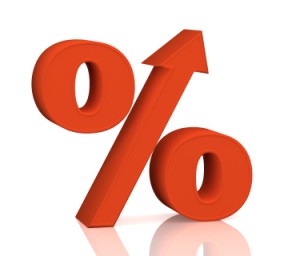Should You Break Your Mortgage?
With fixed mortgage rates eventually heading higher, a lot of Canadians will be thinking that if there’s ever a good time to get pre-approved or lock in their variable rate mortgage, this is it.
What about people who already have a mortgage? Wouldn’t it be great to get out of that 5.50%, fixed-rate, five-year closed mortgage you signed three years ago and take advantage of the lower rates lenders are now offering? Many homeowners who’ve tried this find out there’s one big hurdle blocking that route – the prepayment penalty.
 Most closed mortgages have clauses that allow borrowers to pay out their old mortgages only once a substantial penalty is exacted by the lender. For fixed-rate closed mortgages, that penalty is the higher of three months interest or what’s called the IRD – the interest rate differential.
Most closed mortgages have clauses that allow borrowers to pay out their old mortgages only once a substantial penalty is exacted by the lender. For fixed-rate closed mortgages, that penalty is the higher of three months interest or what’s called the IRD – the interest rate differential.
The IRD charge is generally based on the difference between the original mortgage interest rate and the rate the lender could charge now when relending the funds for the remaining term of the mortgage.
Many people are stunned by what that penalty can amount to. Prepayment charges of $5,000 and even higher are not uncommon in these situations, and these days, lenders aren’t willing to waive or reduce those penalties, because current interest rates are so low.
So is it still worth refinancing these days?
Mortgage experts give a “that depends” answer to that question. “Figuring out if there’s a net benefit in refinancing is very case-specific,” says Robert McLister, editor of CanadianMortgageTrends.com, a mortgage news portal.
He says the question of whether to refinance depends on a couple of key variables: the interest rate of the original mortgage and the time remaining until its maturity. Those variables are what determine the prepayment penalty and whether the bottom line suggests refinancing would be best. “Any mortgage planner can do the side-by-side mortgage comparison,” McLister says.
The Canadian Mortgage Trends website has a mortgage penalty calculator that can give a rough idea of how big the three-month interest and IRD penalties can be.
Entering different variables turns up some quick realities: the bigger the difference in the original and current interest rate, the greater the penalty. And the longer the time until the maturity of the current mortgage, the greater the IRD penalty.
This calculator provides just a rough guideline. You should always dig out your mortgage contract and get a specific penalty cost from your own lender before you decide whether it makes sense to refinance.
Mortgage brokers we talked to, however, say refinancing can still pay off even at the higher fixed-rates now working their way through the system.
The days of 3.69% for a five-year fixed-rate mortgage are definitely over but it can still make a lot of sense for anyone who has a rate over 5% to refinance, even if the new rateis in the low 4s. The silver lining in the higher fixed rates is that the prepayment penalty won’t be as large as it had been.
Refinancing will make the most sense when there isn’t a lot of time remaining in the original term. With four years, it’s not going to work in most cases. The closer to maturity, the better.
Refinancing a variable-rate mortgage can sometimes make sense too.
With an existing variable rate mortgage that’s at prime plus one percentage point, refinancing to prime minus half a percentage point can make sense since the prepayment penalties on variable mortgages are usually just three months interest, rather than an IRD penalty.
Mortgage experts say there’s another situation that often tilts the balance in favour of borrowers going the refinancing route.
“If they have other debt to roll in, that makes refinancing more attractive,” says McLister. That’s because that other debt is typically at rates well above what mortgages charge.
Figures from the Canadian Association of Accredited Mortgage Professionals show that 18 per cent of mortgage borrowers took equity out of their homes last year by borrowing more.
So far this year, that percentage appears to be even higher – perhaps because new mortgage financing rules go into effect in April 2010 that limit refinancings to 90% of the home’s value, down from the old standard of 95 per cent.
Here are some basic refinancing tips:
1. Consider taking advantage of the annual prepayment privilege in your mortgage contract to lower the prepayment penalty.
2. If you’re switching lenders, ask the new lender to waive appraisal and legal fees.
3. Shop around. Don’t assume your current lender will give you the best deal.
4. An independent mortgage broker may be able to arrange a better deal than you could arrange on your own.
Courtesy of CBC News
